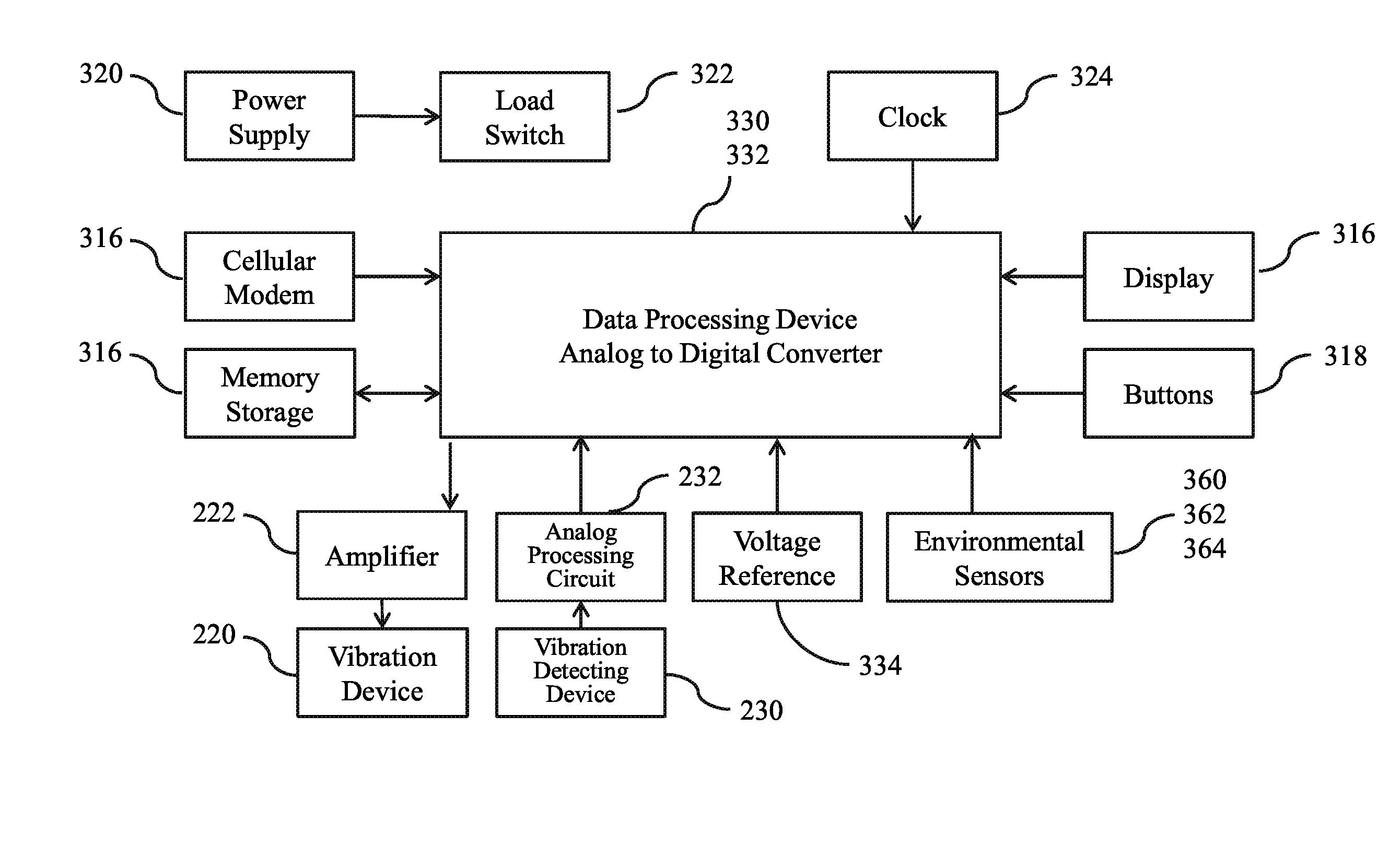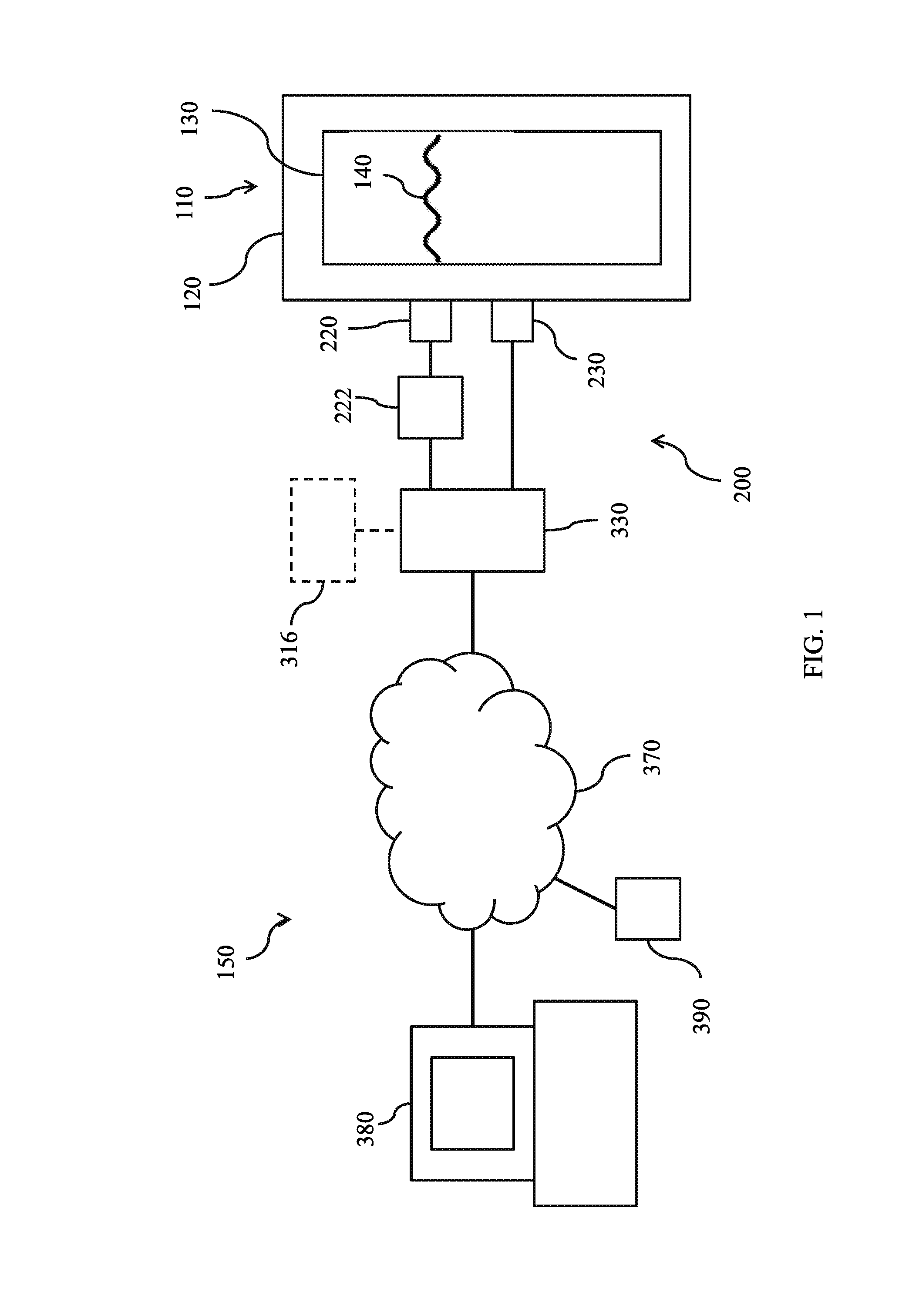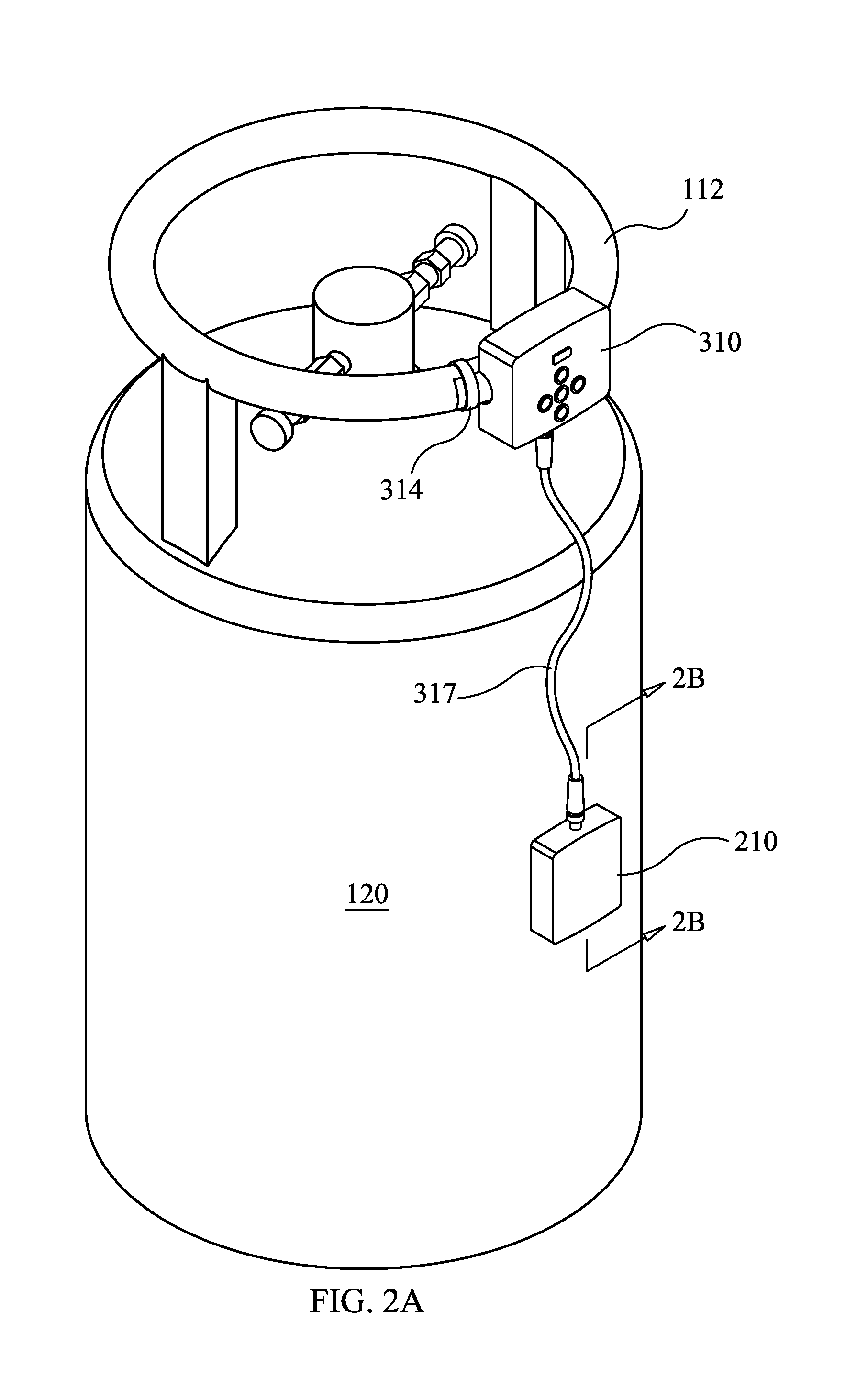Tank-in-tank container fill level indicator
a technology of fill level indicator and tank in tank container, which is applied in the direction of liquid handling, container discharging methods, instruments, etc., can solve the problems of inaccurate or broken pre-existing container fill level gauges, difficult to accurately predict an out-of-gas situation, and high consumption of dioxide, so as to achieve accurate measurement of liquid volume
- Summary
- Abstract
- Description
- Claims
- Application Information
AI Technical Summary
Benefits of technology
Problems solved by technology
Method used
Image
Examples
Embodiment Construction
[0030]For the purposes of promoting and understanding the principals of the invention, reference will now be made to one or more illustrative embodiments illustrated in the drawings and specific language will be used to describe the same.
[0031]Tank-in-tank fill level indicator system 150, constructed according to the principles of this invention, is constructed for the purpose of enabling an accurate indication of liquid volume 140 within a tank-in-tank liquid container 110 in a non-invasive manner. When two or more sounds or vibrations are present having a frequency difference of less than about 20 or 30 Hz, a beat is formed at the difference frequency. The tank-in-tank fill indicator 200 associated with system 150 operates on the principle that the inner tank's resonant frequency 132 changes as the liquid volume 140 in the rigid inner tank 130 increases, and thus the number of beats present in the beat envelopes 143 per time period, resulting from the interaction of the outer tank...
PUM
 Login to View More
Login to View More Abstract
Description
Claims
Application Information
 Login to View More
Login to View More - R&D
- Intellectual Property
- Life Sciences
- Materials
- Tech Scout
- Unparalleled Data Quality
- Higher Quality Content
- 60% Fewer Hallucinations
Browse by: Latest US Patents, China's latest patents, Technical Efficacy Thesaurus, Application Domain, Technology Topic, Popular Technical Reports.
© 2025 PatSnap. All rights reserved.Legal|Privacy policy|Modern Slavery Act Transparency Statement|Sitemap|About US| Contact US: help@patsnap.com



